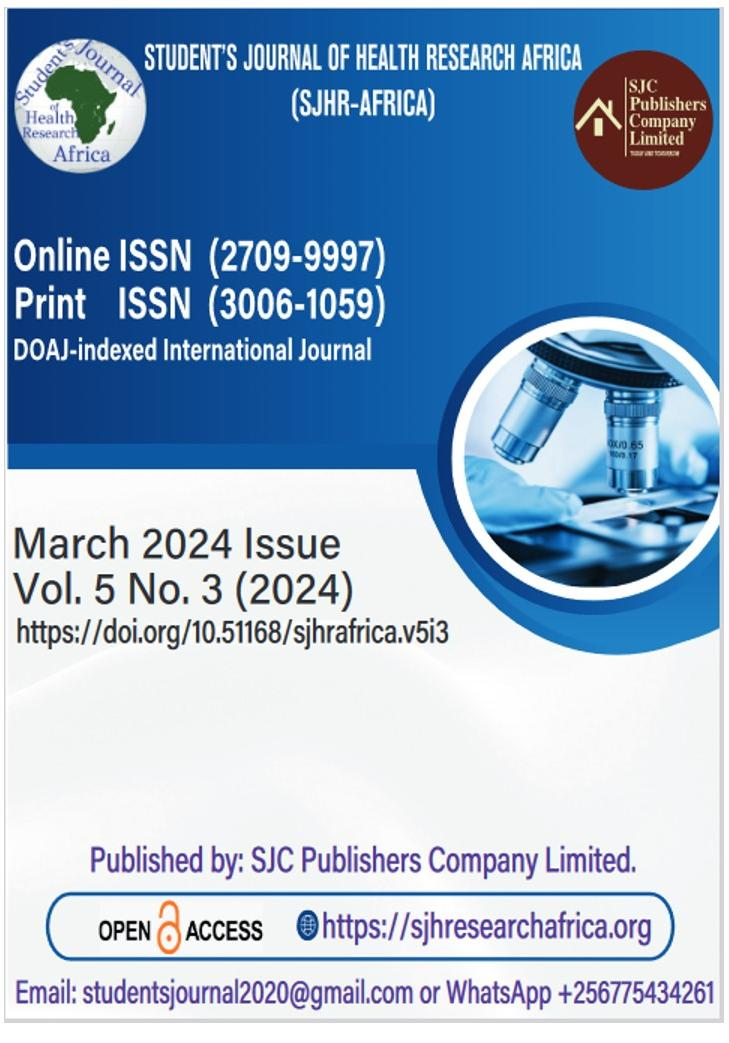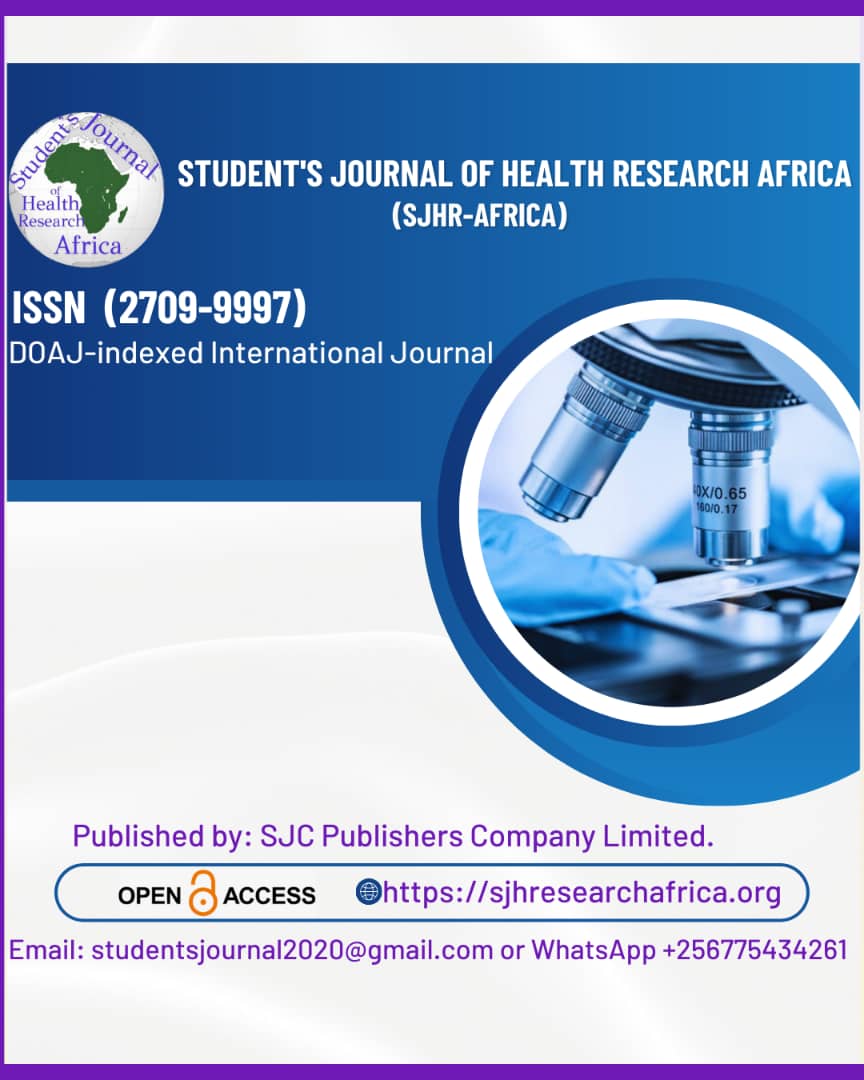PREVALENCE AND ASSOCIATED FACTORS OF MALNUTRITION AMONG ELDERLY AGED 60 YEARS AND ABOVE AT OPD KIBOGA GENERAL HOSPITAL IN KIBOGA DISTRICT. A CROSS-SECTIONAL STUDY.
DOI:
https://doi.org/10.51168/sjhrafrica.v5i3.848Keywords:
Prevalence, Malnutrition, Elderly Aged 60 Years, Kiboga General HospitalAbstract
Background
Malnutrition refers to a state of either undernutrition or overnutrition. Undernutrition occurs when the diet a person consumes does not meet their body's requirements for growth and development while overnutrition occurs when they consume too many calories. Undernutrition may manifest as low body weight for age.
Methodology
A cross-sectional study was used to investigate factors influencing the nutritional status of the elderly aged 60 years and above in Kiboga General Hospital, Kiboga district. The researcher used this study design to collect both quantitative and qualitative data within a short period to explain the relationship between factors influencing the nutritional status of elderly patients, functional ability, and consequences of malnutrition in the elderly.
Results
The prevalence of undernourished was 47.9% based on mid-upper arm circumference (MUAC). There was a significant difference between the prevalence of malnutrition by sex; 71.9% of women were undernourished (average MUAC=20.0cm) compared to 28.1% of men. Those who had adequate knowledge regarding malnutrition had a higher education level. 80.7% of the malnourished elderly had a low-income level (poor) thus they were unable to have 3 meals or more meals each day or to buy food supplements.
Conclusion
This study found out that almost half of the elderly participants were malnourished, with females being highly malnourished than men, majority of the elderly had adequate knowledge about malnutrition due to continuous health education given in the hospital. Furthermore, the study revealed that most of the elderly were poor this in turn affected the frequency, quantity, and quality of food they fed on.
Recommendations
The elderly need to be incorporated into health programs and policies based at local government levels as is the case with pregnant and under five (5) children.
Downloads
Published
How to Cite
Issue
Section
License
Copyright (c) 2024 ENOCK SSEBAMBULIDDE, JUSTINE NEGESA

This work is licensed under a Creative Commons Attribution-NonCommercial-NoDerivatives 4.0 International License.






















